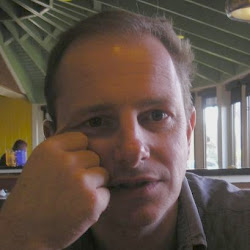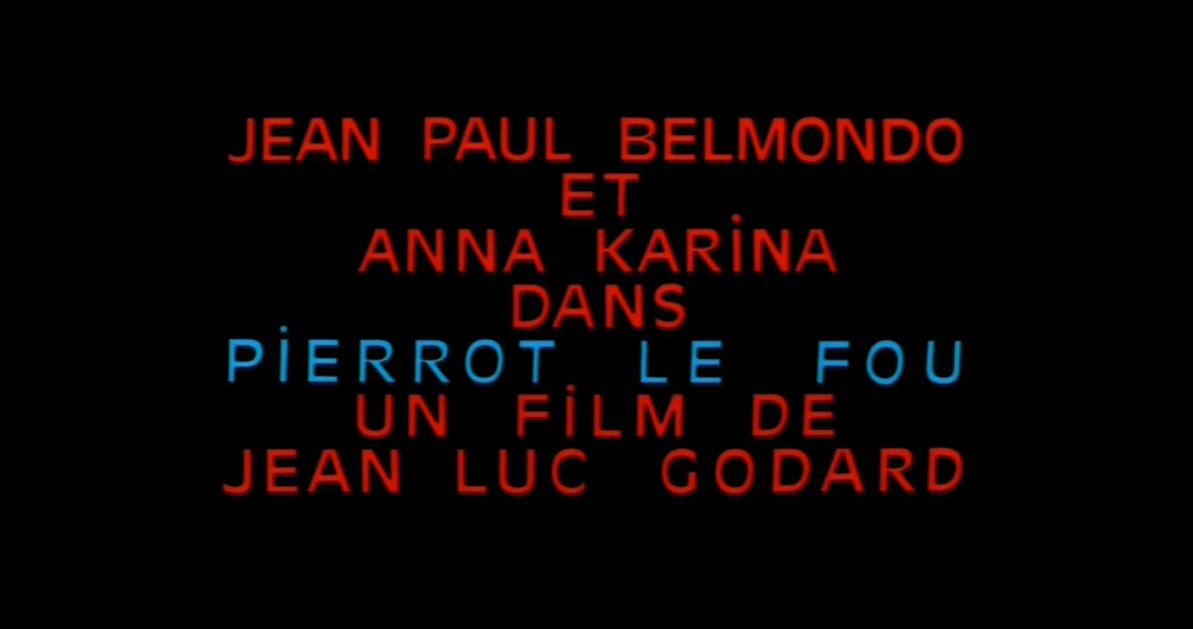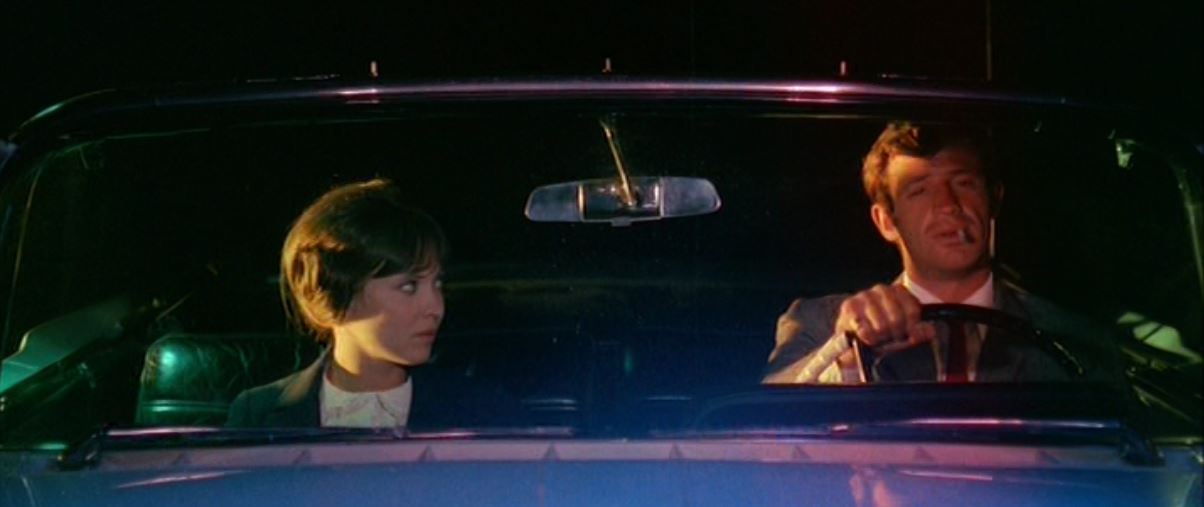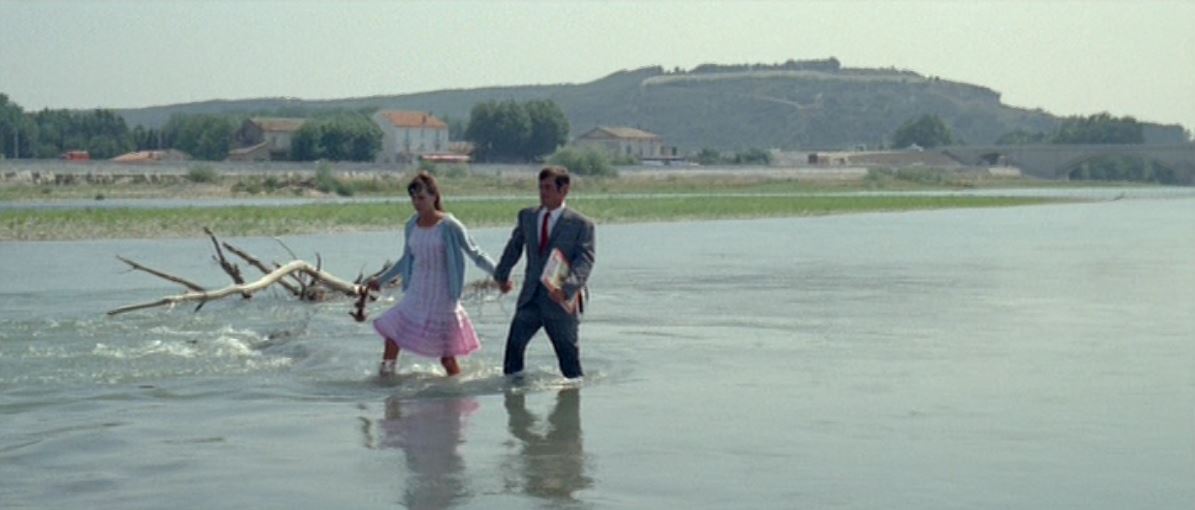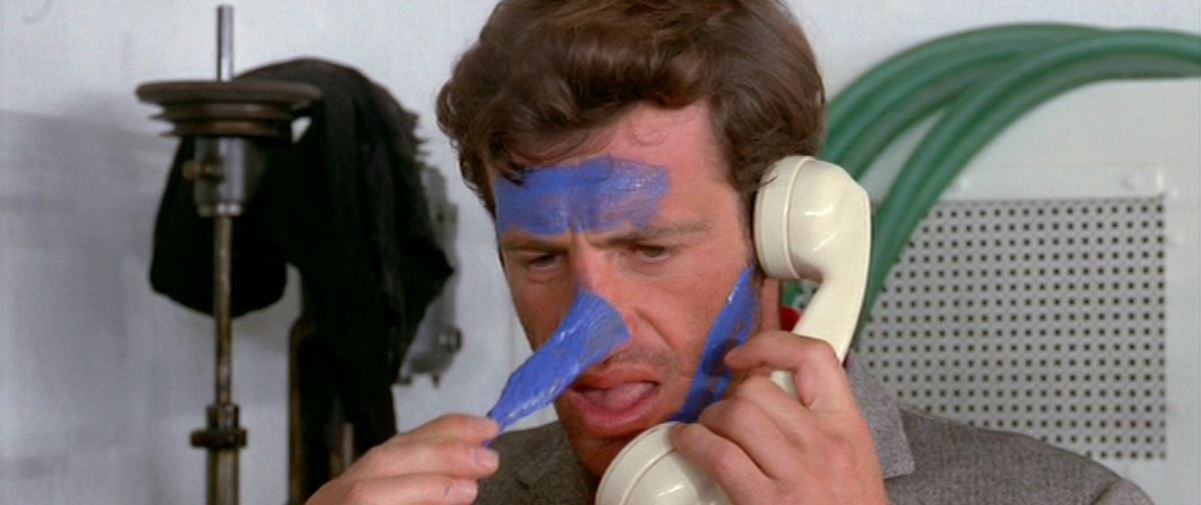Pierrot — who for reasons pertaining to the running jokes about Louis Ferdinand Céline that Jean-Luc Godard finds so funny — has changed his name from Ferdinand — is at a party and meets American film director Samuel Fuller. When asked for the definition of cinema, Fuller responds: "A film is like a battleground. It's love, hate, action, violence, and death. In one word: emotions."
It's possible that Louis Ferdinand Céline was the only one who rivalled Godard in terms of narative acuity and sheer deconstructive power, and certainly Celine had changed the face oif literature, much as Godard sought to change the face of cinema. Hence the art-wars which Godard sought to instigate . . . .
This explains something of what Godard is trying out. In Pierrot le Fou and other movies of the period, Godard tries to transfer emotions directly onto the viewer, not through characters and story, but by means of style. Abandoning conventional drama and substituting it with colours, omniscient voices and eerie music, Godard is looking for an instant and exalted surge of feelings. He plays this out as a destruction of old rules and creation of new.
As Godard said at the time: "literary critics often praise works like Ulysses or Endgame because they exhaust a certain genre, they close the doors on it. But in the cinema we are always praising works which open doors."
Alors! There is a story however and here it is: Ferdinand Griffon (played by Jean-Paul Belmondo) is married to a wealthy Italian woman and has recently fired from the television station where he used to work. His wife obliges him to go to a party in the house of her rich father in order to introduce Ferdinand to a new employer. Her brother brings the babysitter Marianne Renoir (played by Anna Karina), and Ferdinand, bored by the bourgeois party borrows his brother-in-law's car to return home. He meets Marianne, who was his lover five years ago and spends the night with her and finds out that she is involved in smuggling weapons. When Marianne is chased by terrorists, they travel to the south of France together, rendering the rest of the film as a crazy road-movie / love story to nowhere.
Ferdinard: I wonder what's keeping the cops. We should be in jail by now.
Marianne: They're smart .... They let people destroy themselves.
Raymond Devos and Jean-Paul Belmondo
Gone is suspense. Gone is intrigue. Arrived is critical deconstruction and here is a scene I simply love in which comedian Raymond Devos tells a daft love story, in one of many inserted set-pieces, in effect doing a comedic turn out of nowehere.
Early on Ferdinand and Marianne are driving to the news that one-hundred and fifteen guerrillas have been killed, and it is here that Marianne talks of how dehumanising that statement is to the victims because we don't think of them as one-hundred and fifteen different people but just an statistic. She shows how we forget that those men had families, as well as their own thoughts and feelings. A statement which collectively includes them all makes them less human and less reminiscent of their fact as people.
Marianne even says after that that photography, while interesting, is also dehumanising as it freezes a moment of time and cannot do justice to a person’s personality. These are simple observations, but they point to everything that is overlooked by the spectacle of cinema, which is a far narrower thing than we ever believe it to be.
For some, like Rainer Werner Fassbinder, this was an opening up of the artform but for most, Godard’s films were curiosities which were to be enjoyed for their points of view, but largely ignored. The conventions persist, as they have done since cinema was new. Best of all, in Pierrot le Fou, Godard, who always seems to hold the novel as a higher artform than the film, criticise both at once.
Marianne: That's what makes me sad: life is so different from books. I wish it were the same: clear, logical, organised.
Le titre Pierrot le Fou renvoie d'emblee a deux personages, le celebre malfrat Pierre Loutrel, et le personnage Pierrot, lunaire de la commedia dell'arte qui y represente l'innocence bafouee et l'amour trompe.
L'importance accordee a l'univers sonore est fondomentale dans les filmes de Godard et saute aux oreilles de n'importe quel spectateur. While launching broadsides against the cinema as a whole, Godard gleefully has time to dig against the oly novelist who could have ever stood up to him, Louis Ferdinand Celine.
On top of that, Godard includes a hearty dosage of Balzac, or again, the destruction of therein, rehashing themes from the Balzac novella The Unknown Masterpiece. The Unknown Masterpiece is about a painter in seventeenth-century France who has been working alone for a decade on a portrait of a woman that he considers to be not only his masterpiece but an seismic advance in the history of art. When he shows the painting to his friends however, they find it to be an incomprehensible mess, and he kills himself.
The connection to Pierrot le Fou becomes even more evident, then, as a self-portrait of the artist on the cusp of pushing a philosophical question into artistic form, or in both cases it appears formlessness, and doing so to such an extreme that it destroys not only himself but, the damages the form itself.
Message: Jean-Paul Belmondo paints himself Yves Klein Blue
Voici - This clip demonstrates an historical aspect of the film Pierrot le Fou and post mortem views of Louis Ferdinand Céline in 1960s France, particularly as seen by Godard, who insisted that the real fool, the utter Pierrot, was Celine, who like himself rendered himself an idiot in his attempts to achieve artistic heights amid the modern spectacle.
